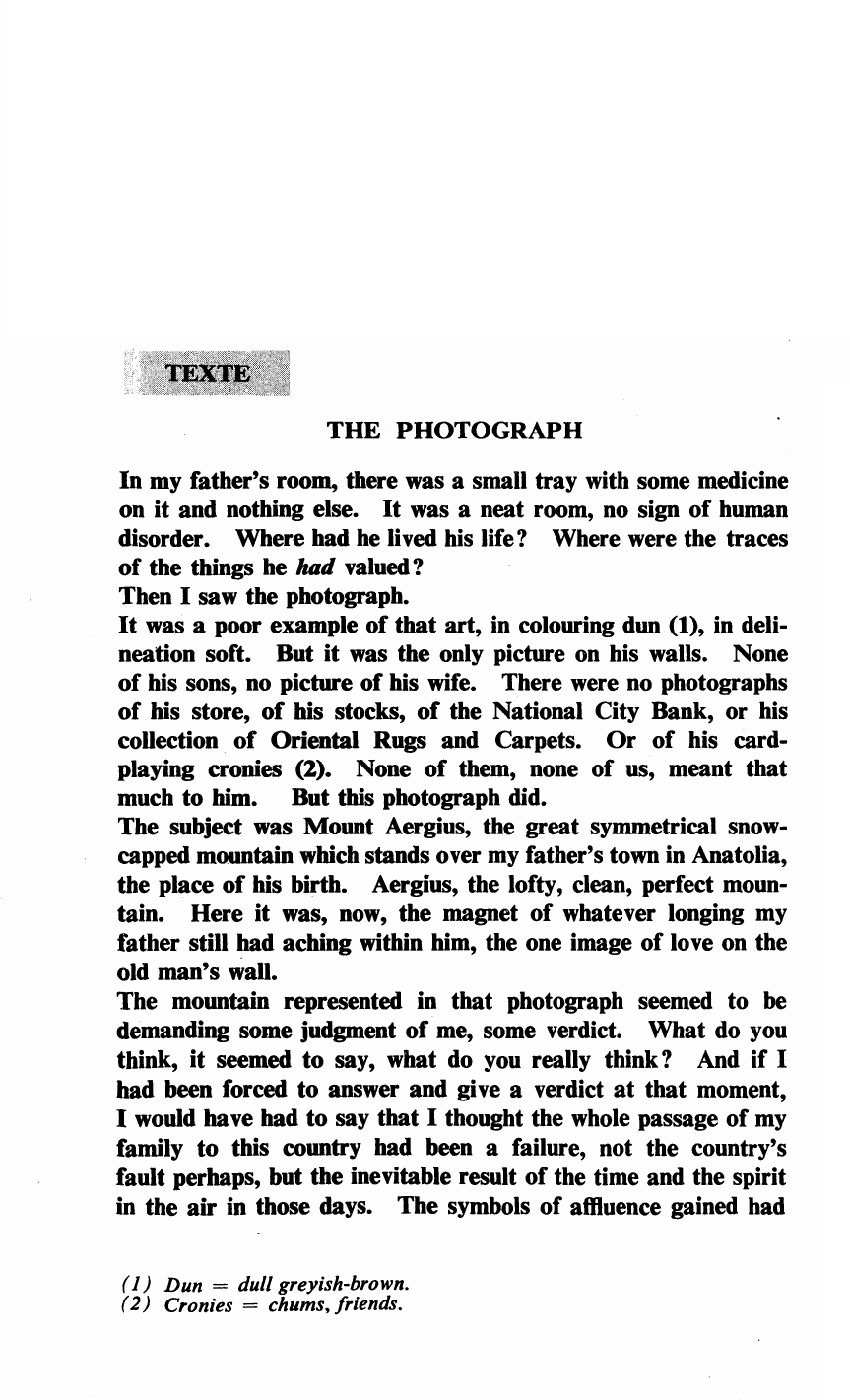THE PHOTOGRAPH
Publié le 16/05/2020
Extrait du document
«
THE PHOTOGRAPH
In my father's room, there was a small tray with some medicine
on it and nothing else.
It was a neat room, no sign of human
disorder.
Where bad
he lived his life? Where were the traces
of the things he had valued?
Then
1 saw the photograph.
It was a poor example of tbat art, in colouring dun (1), in deli
neation soft.
But
it was the only picture on his walls.
None
of his sons, no picture of his wife.
There were no photographs
of his store, of his stocks, of the National City Bank, or his
collection
of Oriental Rugs and Carpets.
Or of his card
playing cronies (2).
None
of them, none of us, meant that
much to him.
But this photograph did.
The subject was Mount Aergius, the great symmetrical snow
capped mountain which stands over my father's town in Anatolia,
the place
of his birth.
Aergius, the lofty, clean, perfect moon
tain.
Here
it was, now, the magnet of whatever longing my
father still bad aching within him, the one image of love on the
old man's
waU.
The mountain represented in that photograph seemed to be
demanding some judgment of me, some verdict.
What do you
think, it seemed to say, what
do you really think? And if 1
bad been forced to answer and give a verdict at that moment,
1 would have bad to say that 1 thought the whole passage of my
family to this country bad been a failure, not the country's
fault perhaps, but the inevitable result
of the time and the spirit
in the air in those days.
The symbols
of affluence gained bad
( 1) Dun = dull greyish-brown.
(2) Cronies = chums,friends..
»
↓↓↓ APERÇU DU DOCUMENT ↓↓↓
Liens utiles
- Hanif Kureishi - The Buddha of Suburbia
- does the end justifies the means
- the handmaid's tale: How far do you agree that Margaret Atwood makes resistance central to THT?
- La surprise au cinéma - Critique The King of Staten Island et Annette
- The danger of space exploration on the human body and the environment

































